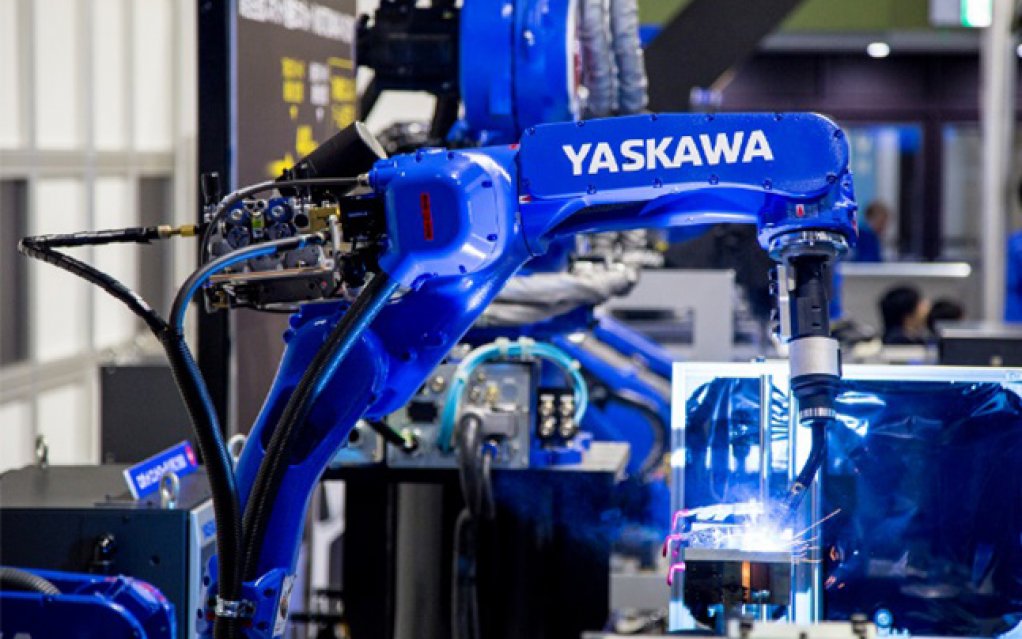Robots in the workforce


HUMAN-MACHINE COLLABORATION Robots will always require quality assurance, operators and support staff
Robots are not here to replace humans, but to create a human-machine collaborative model for a more efficient and productive way of operating, says industrial robot manufacturer Yaskawa Southern Africa MD Andrew Crackett.
Ever since robots were introduced in the science fiction genre, there has been a fear that machines will take over and that soon, the days of humans being at the top of the food chain will be gone. The fear-mongering has persisted with notions of robots overthrowing the workforce and humans being enslaved to the almighty lords of automation and binary code.
Much like every industrial revolution before it, the Fourth Industrial Revolution ensures changes in how people work by driving productivity, efficiency and output to levels never seen before, mainly through the use of artificial intelligence and automation. According to market research firm Tractica, it was forecasted that the yearly global revenue for artificial intelligence products and services would grow from $643.7-million in 2016 to $36.8-billion in 2025.
Crackett believes the increase in the use of robotics is actually creating new opportunities for employees rather than decreasing them.
“Yaskawa has implemented several projects at labour-intensive organisations to streamline operations. “Rather than seeing a reduction in staff, however, we’ve actually witnessed the employees being assigned to other areas or new positions. “By freeing up resources from repetitive tasks that robots can handle, they’re now able to be upskilled and deployed to areas and tasks that require human cognitive reasoning.”
Unlike the world of Blade Runner, robots do not possess the power of the human mind. They are capable of performing what they are programmed to do – reliably and consistently – but for this to happen, they require someone with reasoning and problem-solving skills to implement these functions. At the end of the day, robots will always require quality assurance, operators and support staff.
Apart from repetitive tasks, robots can assist with strenuous – and sometimes dangerous – functions that take place in factories. Palletising is a prime example. Previously, human workers were responsible for the packing and loading of boxes onto pallets for shipment or storage.
It was a labour-intensive exercise where workers could tire or even be injured in the process, especially with the lifting and moving of heavier items. Now, this is a task that can be handled through robotic automation.
Not only will robots help prevent unnecessary injuries and dangers in this regard, but they also remove the need for many hands to touch the same surface. In current times, this is particularly useful as the world tries to be more health conscious and we move towards becoming a touchless society.
But robots are not the alpha and omega of factories, as explained by Crackett. “One of the common misconceptions that everyone has about robots is that they handle the entire manufacturing process – from start to finish – without intervention,” he says.
A robot is a tool just like any other type of machinery. It can be designed and programmed to execute fit-for-purpose functions, but it also has limitations and there are areas where humans will still predominate.
“The human eye, as an example, is able to identify an object's location far quicker than a robot’s three-dimensional vision ever will. It’s about recognising the strengths and weaknesses of both humans and machines, so that we’re able to divide tasks more adequately to achieve better results,” Crackett explains.
Ultimately, the factory of the future will not be a fleet of sentient robots operating like Skynet. Rather it will be an innovative hybrid model where human-machine collaboration will be at the core of its operations. Maybe science fiction is actually called fiction for a reason.
Comments
Press Office
Announcements
What's On
Subscribe to improve your user experience...
Option 1 (equivalent of R125 a month):
Receive a weekly copy of Creamer Media's Engineering News & Mining Weekly magazine
(print copy for those in South Africa and e-magazine for those outside of South Africa)
Receive daily email newsletters
Access to full search results
Access archive of magazine back copies
Access to Projects in Progress
Access to ONE Research Report of your choice in PDF format
Option 2 (equivalent of R375 a month):
All benefits from Option 1
PLUS
Access to Creamer Media's Research Channel Africa for ALL Research Reports, in PDF format, on various industrial and mining sectors
including Electricity; Water; Energy Transition; Hydrogen; Roads, Rail and Ports; Coal; Gold; Platinum; Battery Metals; etc.
Already a subscriber?
Forgotten your password?
Receive weekly copy of Creamer Media's Engineering News & Mining Weekly magazine (print copy for those in South Africa and e-magazine for those outside of South Africa)
➕
Recieve daily email newsletters
➕
Access to full search results
➕
Access archive of magazine back copies
➕
Access to Projects in Progress
➕
Access to ONE Research Report of your choice in PDF format
RESEARCH CHANNEL AFRICA
R4500 (equivalent of R375 a month)
SUBSCRIBEAll benefits from Option 1
➕
Access to Creamer Media's Research Channel Africa for ALL Research Reports on various industrial and mining sectors, in PDF format, including on:
Electricity
➕
Water
➕
Energy Transition
➕
Hydrogen
➕
Roads, Rail and Ports
➕
Coal
➕
Gold
➕
Platinum
➕
Battery Metals
➕
etc.
Receive all benefits from Option 1 or Option 2 delivered to numerous people at your company
➕
Multiple User names and Passwords for simultaneous log-ins
➕
Intranet integration access to all in your organisation


















